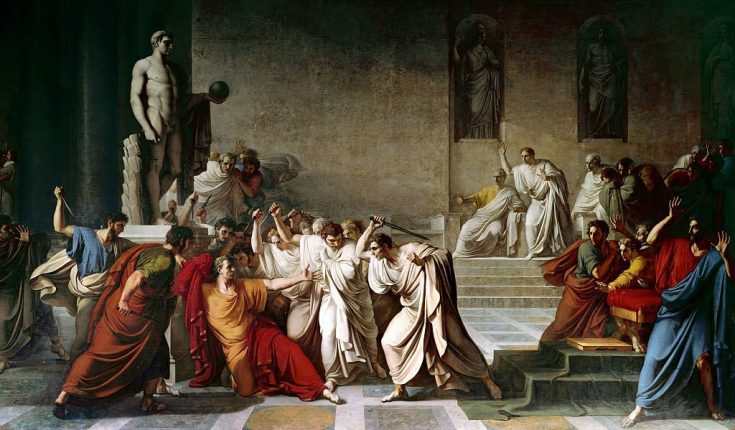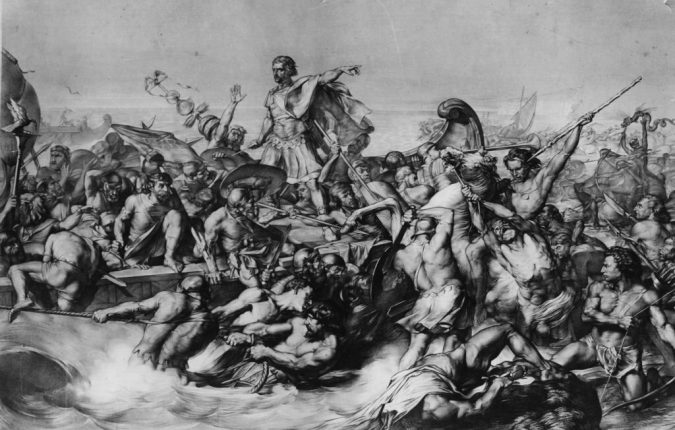A deep look into How Tall Was Julius Caesar? Julius Caesar’s height is around 5’5″ to 5’7″.
The legendary Roman leader Julius Caesar was one of the most towering figures in ancient history – both in influence and in physical stature. Contemporary accounts depict Caesar as a man of unusually tall height for his era, likely standing between 5’7″ and 5’10” based on the long-limbed proportions shown in statues and busts. This lofty height gave Caesar a physical advantage over rivals in battle and politics in ancient Rome, allowing him to literally and figuratively stand above other Roman elites as he conquered new territory for the growing empire. Though his exact measurements elude historians today, the evidence clearly paints Caesar as an imposing, tall figure who used his elevated height to complement his elevated ambition.
Let’s delve into the fascinating question – just How Tall Was Julius Caesar?
Historical Accounts Suggest Caesar Was Taller Than Average
Contemporary ancient sources provide clues about Julius Caesar’s above-average height. A few key examples:
- Suetonius wrote Caesar was “tall of stature with a fair complexion, shapely limbs, a somewhat full face, and keen black eyes.” This depicts him as tall and physically imposing.
- Plutarch described Caesar as being “tall and fair” with a “spare body.” The use of “tall” again points to him being larger than his peers.
- The poet Catullus sarcastically referred to Caesar as “every woman’s tall and handsome darling.” Though mocking, this suggests Caesar was considered tall.
- Caesar was known to wear a laurel wreath to cover his baldness, suggesting he had an exceptionally large head. Large heads often correlate to taller frames.
These accounts uniformly point to Julius Caesar having an above-average height for his era in ancient Rome. He was viewed as tall, with a slender, imposing figure.

Artistic Evidence Also Indicates Julius Caesar Was A Tall Man
In addition to written accounts, we can examine artistic evidence about Julius Caesar’s stature:
- Roman marble busts depict Caesar with a long, slender neck and an oval head, suggesting a tall body shape.
- Statues such as the Tusculum portrait present a taller-than-average man, though exact proportions vary across artwork.
- On engraved gems with miniature portraits, Caesar’s head is quite large relative to the torso, implying a tall frame.
- Coins featuring profile portraits of Caesar also have a relatively large head-to-body ratio consistent with greater height.
Clearly, ancient Roman artists also perceived Julius Caesar as being a tall man and intentionally conveyed these physical attributes in their works. read also Apex Future Martial Arts Chapter 24.
Compared to Average Heights in Ancient Rome
Using skeletal remains, historians estimate the average height for Roman men in the 1st century BCE was around 5’5″ to 5’7″.
Elite members of society were likely taller than common citizens due to better nutrition. But even among elites, Julius Caesar was considered exceptionally tall.
Most scholars place Caesar’s height somewhere in the 5’7″ to 5’10” range based on artistic evidence and written accounts using terms like “tall” and “taller than average.” This would place him at the higher end of the range for Roman men of his status.
5’7″ was quite tall for the ancient era, allowing Caesar to literally stand out among his peers. And as a military leader, his height would be physically imposing.
So while exact precision is impossible, the combined evidence strongly suggests Julius Caesar was notably taller than most Romans of his day.
Julius Caesar’s Height Offered Political Advantages
Why did Julius Caesar’s above-average height matter? His stature likely provided some key political advantages:
- Intimidation – As a military leader, Caesar could intimidate foes with his imposing physical size. This enhanced his authority on the battlefield.
- Distinctiveness – His height made Caesar stand out in a crowd symbolically as well as literally. This aided his ambition to rise politically in Rome.
- Strength – With archaeological evidence indicating he had robust muscularity, Caesar’s height added to his physical strength, helping him prevail in combat.
- Presence – His tall frame gave Caesar gravitas and presence as an orator. Along with his rugged features, he could compel attention.
So Caesar’s lofty stature was an asset, letting him tower over rivals and reinforce his relentless drive to acquire status and power in ancient Rome. His physical proportions were just one weapon in his arsenal as he reshaped the political landscape.

Key Takeaways on Julius Caesar’s Height
In summary, historical accounts point to Julius Caesar being taller than the average Roman man of his era:
- Ancient written sources consistently refer to Caesar as tall, using language like “taller than average” to describe him.
- Artwork including statues, busts, and portraits depicts Caesar as tall with a slender, well-proportioned frame.
- Compared to skeletal remains, Caesar was likely between 5’7″ and 5’10”, exceptionally tall for the period.
- His height offered advantages in battle, oratory, and projecting status in Roman society.
While his exact measurements remain unknown, through a careful examination of evidence, we can confirm Julius Caesar’s legendary status was boosted by his notable height. This impressive stature reflected his outsized ambitions to conquer enemies on the battlefield and dominate the political scene in ancient Rome.
Final Words
In Final Words, historical and archaeological evidence makes it clear that Julius Caesar stood prominently taller than the average Roman man during the 1st century BCE. His exact height remains uncertain centuries later. But through contemporary accounts, portraits, and comparison to skeletal records, a reasonable estimate is between 5’7″ to 5’10”.
This above-average stature gave Caesar physical and symbolic advantages over rivals as he battled enemies on military campaigns and political opponents in Rome itself. His height contributed to a distinctive, impressive aura that amplified his authority and ambitions in both war and politics.




